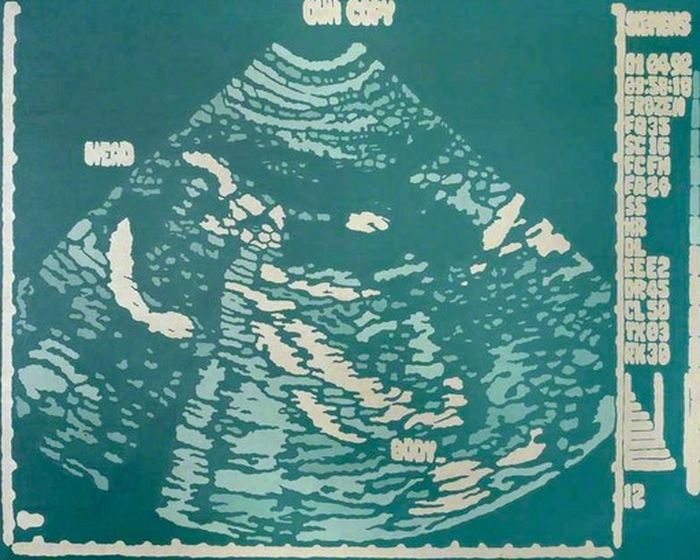In 2010, Martin Bond began noticing things. Not noticing in the overt sense of the word, but really perceiving and paying attention to objects, people, and performances of the everyday, all too often overlooked or dismissed. Beginning with a casual snapshot of a decorator spilling a can of paint from his ladder onto the pavement below, Bond captured the transient look of dismay that crossed his face and became “hooked” on preserving ephemeral moments.
Before publishing his first photobook ‘Town & Gown’, Bond began posting these images on Facebook, in a project named ‘A Cambridge Diary’. The ‘diary’ became an informal record of the eclectic intricacies of Cambridge life – its landscapes, characters, and interactions, that offer a glimpse into personal moments without intrusion. The project originally focused on the city outside the university, attempting to reveal a different slant to Cambridge beyond the archetypal photos of ivy-clad walls in its shiny prospectuses. However, Bond soon discovered that it was impossible to bypass the allure of grandiose buildings and majestic bridges, and, inevitably, university life wound its way into his images. But despite the fated inclusion of historical landmarks and gothic architecture that underpin Cambridge’s notoriety, these elements often fade into the background of his images, as Bond’s lens sees beyond the established rhetoric of the city. The photos showcase the mundane practices of the city’s characters: the coffee-sipping scholars, street musicians and market vendors. The laughter of May-ball goers tipsily navigating cobblestone pathways. The dog walkers followed by leisurely urban cows, as they stroll alongside the river bobbing with elegant swans and mallard ducks. Bond captures the unremarkable practices of the everyday, and in doing so, transforms them into remarkable and noteworthy pieces of artwork.
“The photos showcase the mundane practices of the city’s characters: the coffee-sipping scholars, street musicians and market vendors. The laughter of May-ball goers tipsily navigating cobblestone pathways.”

Cambridge is a city that looks best on a sunny day: leafy trees against cloudless skies and sandstone walls bathed in light, when we see the sun stretching its golden fingers down cobblestone streets and up ancient spires. But it is not a city of unblemished skies, and, as any golden-hour-enjoyer will tell you, it’s more challenging to capture the charm of a drizzly evening. On the 4th of January in 2014, Martin Bond took a photograph of a couple wandering down Green Street, arms linked, closely huddled to share an umbrella that covers neither of their heads fully. It’s a relatable image – the intimate yet universal experience of traipsing home in the rain, too focused on reaching a destination to notice the silhouettes of so many others around us. The accompanying description offers a brief insight into the photo – the figures are a 90-year-old woman and her daughter, making their way to a photography studio on Green Street to have her portrait taken for the cover of her new book on the psychology of learning. Beyond the gloom, the glow of street lamps warms the pavements and rain falls with gentle insistence, as the image immortalises a fleeting moment between two city-dwellers, capturing their story.

This photograph is one of 365 carefully curated images in Bond’s new book, ‘Town & Gown’, one for each day of the year. The book tells a unique tale of the diverse and multifaceted life of Cambridge inside and outside the university walls. Taking its namesake from the city’s cliché role as a home to two distinct communities - the local town population and the university-affiliated residents - the eponymous book strips the city of its labels. Students, townsfolk, and tourists are simply presented as real people, going about their daily lives in Cambridge. In the foreword, Bond includes an ode to the influence of the university and the town on one another, seeing them not as two separate entities, but as a symbiosis that shapes the city to create Cambridge’s unique character, picturesque cityscape, and buzzing atmosphere.
“The camera becomes a silent observer, capturing the camaraderie, shared glances and unspoken connections that gives the city its soul.”

The photos are diverse, candid realities. From breath-catching scenes of fiery skies, to endearing images of streetwise animals that are infused with humour and playful whimsy. Bond’s book records the seasons passing and weather shifting: if Cambridge is beautiful in the sun, then it is magical in the fog. Mist rises from the river in an ephemeral veil that softens the city’s silhouette. In April, a swan takes flight over the river – the photograph captures the second it skims across water, like a pebble strewn across an open ocean – and for a brief moment, the ripples align on the surface. Cyclists find peace in the countryside and punters navigate congested river lanes with occupants bundled up in blankets. The camera becomes a silent observer, capturing the camaraderie, shared glances and unspoken connections that gives the city its soul.
As a Cambridge student, it is all too easy to get swept up in the hecticness of our daily lives; essays, supervisions and college traditions create a dense bubble that envelops and shutters us from the city’s vitality. ‘Town & Gown’ pierces these bubbles, allowing us to peer into moments that are intimate, vulnerable, joyous, and beautiful. This book offers students the chance to appreciate the city in a different light. It presents a multi-coloured panorama of Cambridge life, and gently reminds us of the value in paying attention to our surroundings.


